From there we got in our little PT Cruiser rental car and headed off to the "Lower Road" (aka Highway 11). We passed through several small towns and Volcanoes National Park before stopping at Punalu`u Black Sand Beach. The beach is 60 miles from both Kona and Hilo so is often less crowded than some of the other island beaches. The main attraction of this beach, though, is the sea turtles. They like to rest on the black sand beach and munch on the seaweed close to shore.
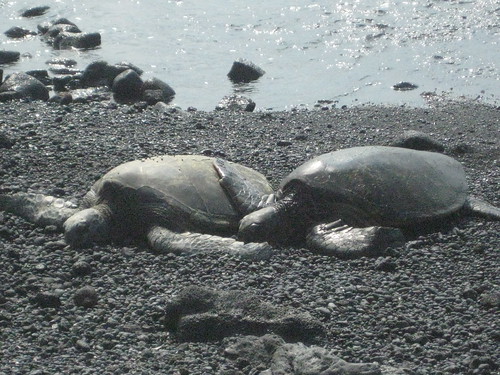

They did not disappoint. We say about 8 of them in total, either on the beach or in the water.
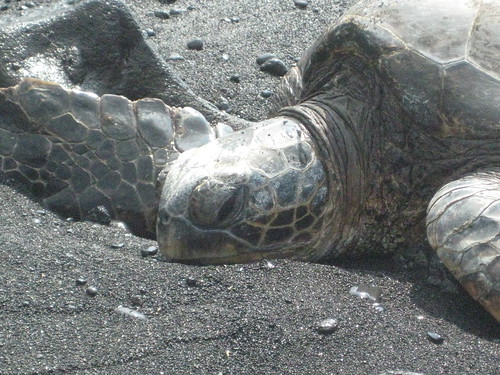
It's a nice spot, a bit windy. We saw some folks fishing with a hukilau and it looked like there were some people camping.

After taking countless photos of the beautiful honu, we got back in the car and headed further West, to Pu'honua o Honaunau National Park. We visited the park last year, and enjoyed the self-guided tour of the replicated Polynesian Village and the Place of Refuge itself. The grounds are considered sacred, as they used to be used as a "honaunau" or "place of refuge" during the kapu years in Ancient Hawai`i. If you broke a kapu (tabu, law), then your only option to avoid death was to find the nearest honaunau.

The park is a beautiful setting, with coconut palms swaying amidst wood-carved ki`i and grass hales. The other side of the park is also a great snorkeling and swimming spot.
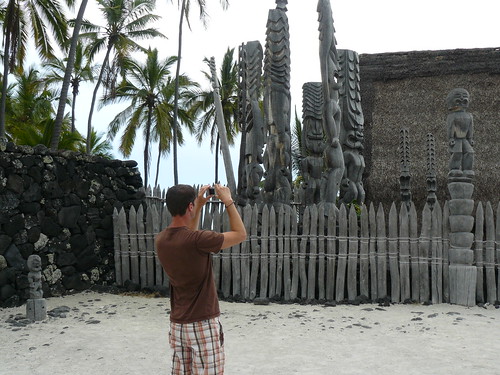
Today and tomorrow, the park is host to the 48th Annual Hawaiian Cultural Festival. Dan and I both spotted this in the local papers and wanted to make it a priority for this trip. The festival had no cover charge, and featured mostly Hawaiian ancient crafts and demonstrations. We got to see kapa (bark from mulberry trees) being soaked and pounded out before it later becomes clothing. There were also lauhala and palm frond weaving, bamboo flute making, canoe rides, lomi lomi massage, and gourd painting. In fact, we got to meet the guy we saw in a video at the Hawaiiana Live show in Hilo who has resurrected the ancient art form. He has a studio in the Holulaloa area and was very friendly. I also received a bookmark made for me from one of the stations that featured dyes and templates (though I doubt they were called 'templates.')
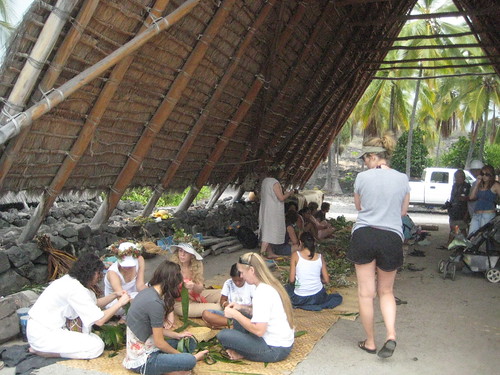

After perusing the grounds for a spell, our appetites got the best of us and we decided to drive into Kona for lunch at one of our favorite spots - Huggo's on the Rocks.

After spending some time at the Royal Kona on our last two trips to the Big Island, it felt a bit strange to be looking for parking. While Hilo is the largest city on the island, Kona is the commercial hub and home to the tourist. That means a lot more traffic and congestion, though nothing compared to Honolulu.
We enjoyed our lunch on the water, and then poked around town. Our ice cream cones almost melted immediately in the humidity, but were worth the mess. A few stores have closed, a few new restaurants have opened, but Kona remains pretty much the same as it did a year ago. I do love how walkable it is, and the energy is always up. If you stay close to town, you almost wouldn't need a rental car unless you planned to do outside exploring.
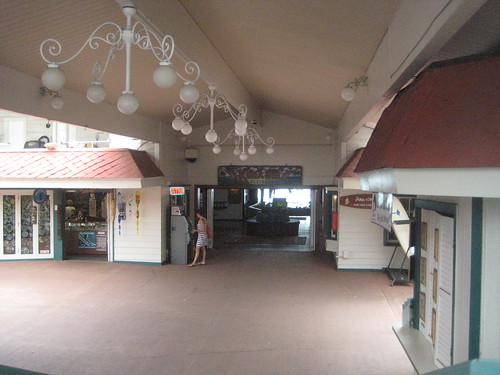
But we had more on our agenda this trip so we'll have to wait and spend more time in Kona the next time. We got back in our car and headed north up Highway 190 to reach Saddle Road. Saddle Road used to be off-limits to any 2WD vehicle. But thanks to some hard work and pressure from the citizens, the road is on its way to being more navigable. It's also a bit of a short-cut through the island, as it weaves between Mauna Kea and Mauna Loa and eventually ends up in Hilo after 53 miles of winding road.

Along the way, the terrain changes from barren lava rock with cacti growing to grassy pasture lands. The construction is working East-West so the early stretches were pretty bumpy. I believe this has caused some friction across the island as people on the West side feel snubbed as the East side holds the county seat and thus seemingly gets preferential treatment.
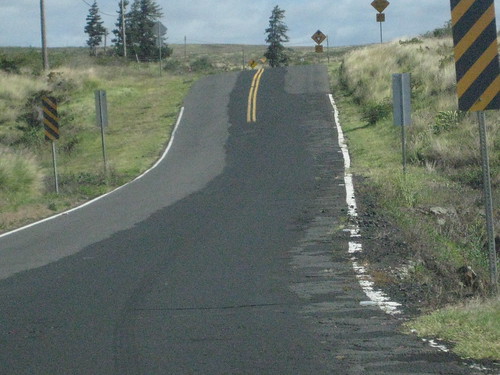
It was a long day of driving, putting us back at the house just before 6pm. Still some sun left, I went for a quick jog before relaxing for the night. We made due with food we had in the house, and enjoyed seeing the first starts appear while in the hot tub.

No comments:
Post a Comment